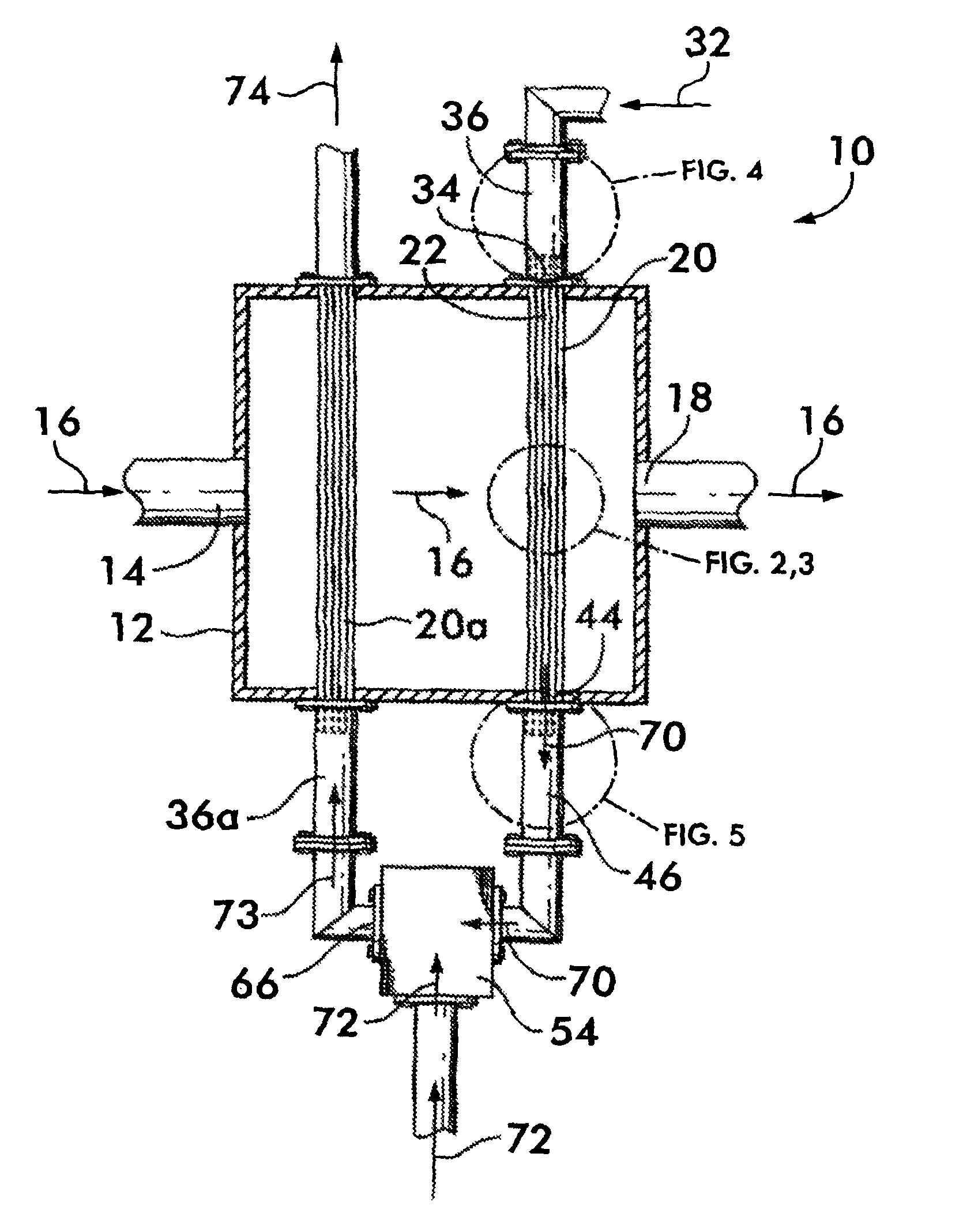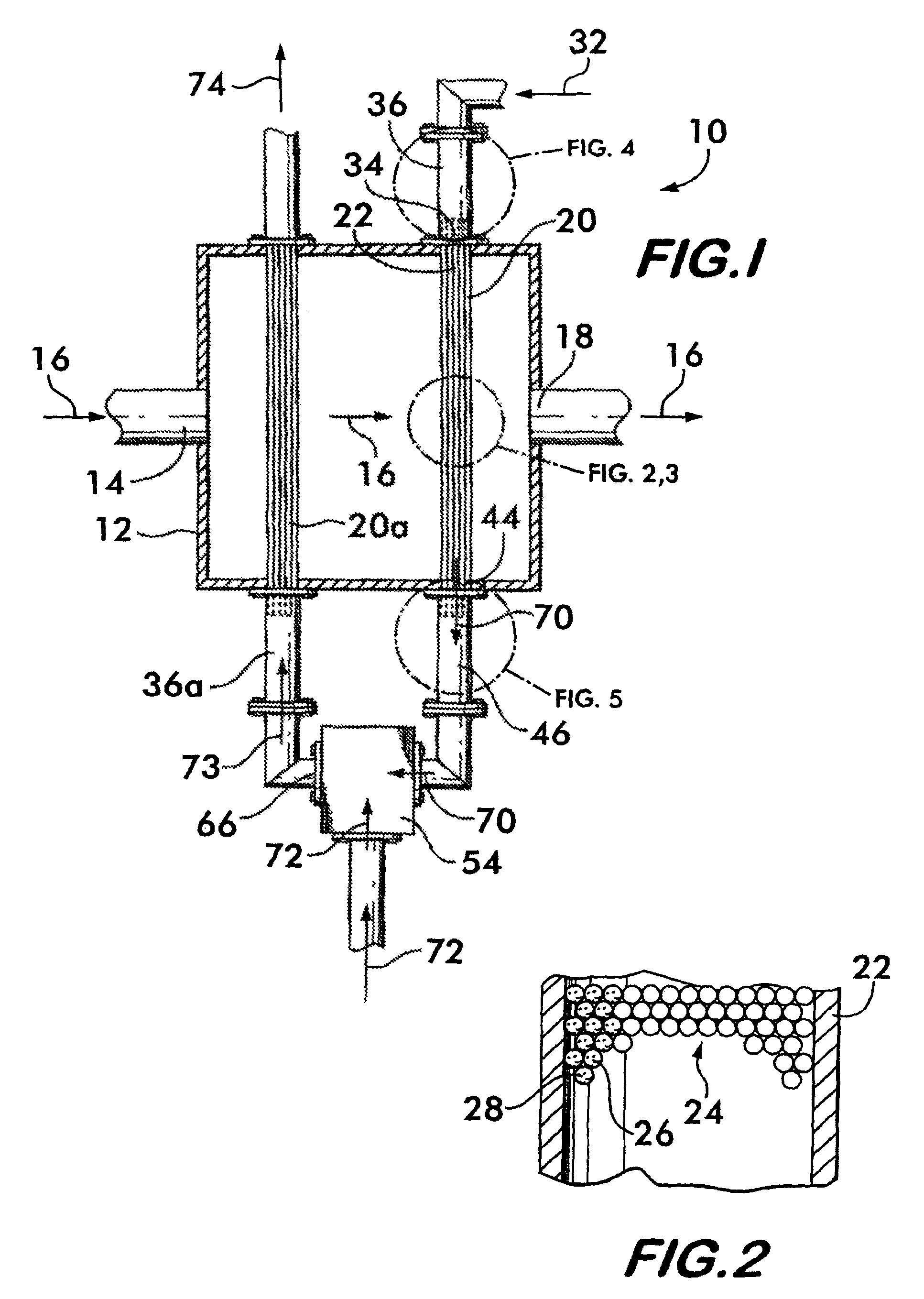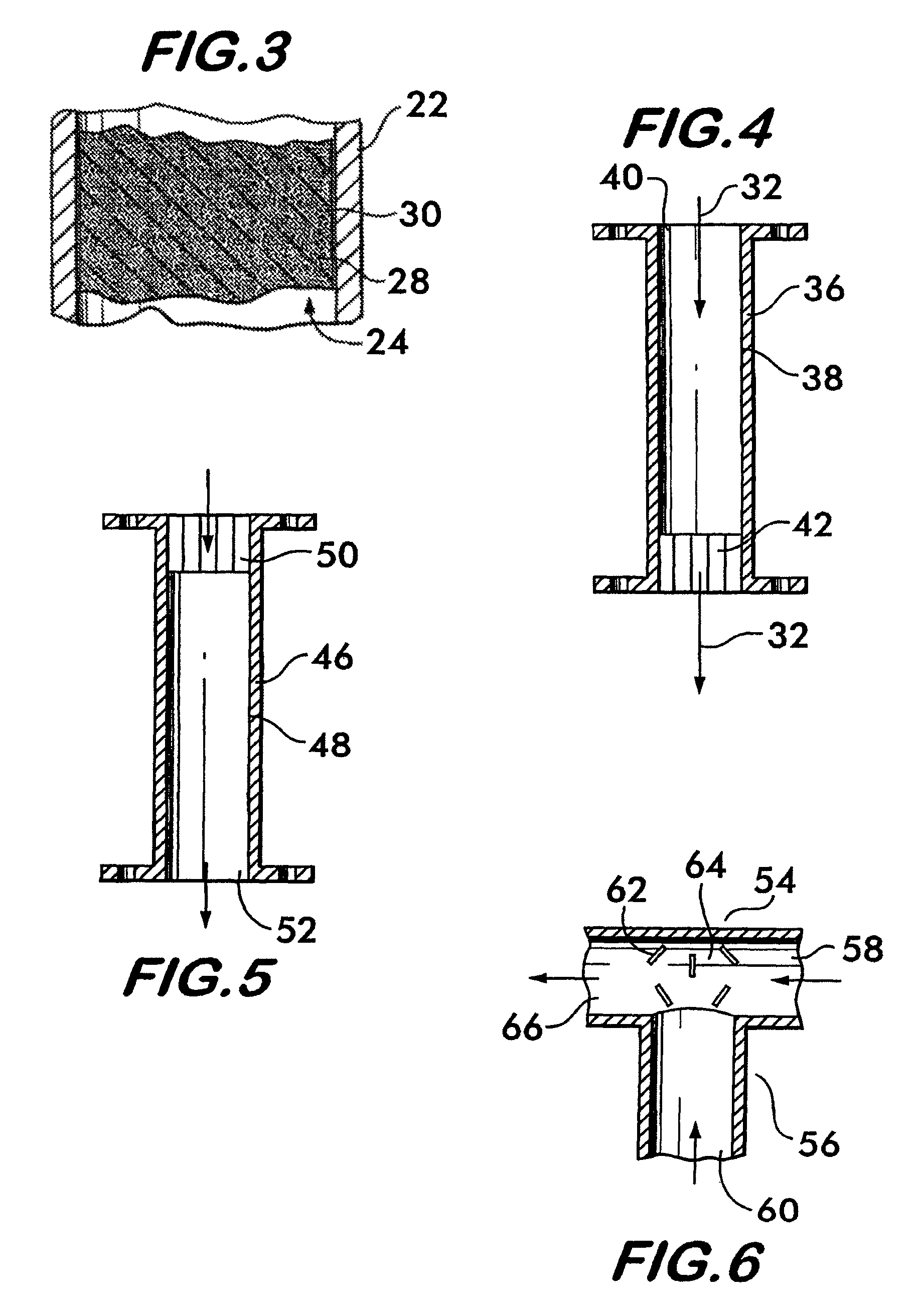Staged hydrocarbon/steam reformer apparatus and method
a technology of steam reformer and hydrocarbon, which is applied in the direction of electrochemical generators, chemical/physical/physical-chemical processes, organic chemistry, etc., can solve the problems of limiting the process efficiency and affecting the efficiency of the prior art steam reforming apparatus and method
- Summary
- Abstract
- Description
- Claims
- Application Information
AI Technical Summary
Benefits of technology
Problems solved by technology
Method used
Image
Examples
example 1
[0056]This example relates to a one-stage convective reformer apparatus 100 shown in FIG. 11. The reformer has five parallel rows of tubes 102, 104, 106, 108, 110, each containing a methane reforming catalyst. The tubes are enclosed in a convection tunnel 112, and heated by the flue gas 114 from a fired reformer furnace (not shown). The flue gas 114 approaches the convective reformer at 836° C. and exits at 738° C. The tubes are arranged in a cross flow configuration with respect to the flue gas flow with the 5th row 110 being located upstream, 1st row 102 downstream, and the other three rows 104, 106 and 108 in between as shown. A feed 116 comprising methane and steam enters a distribution manifold 118 that is connected to the inlets of all five rows of tubes. The partially reformed gas 120 from the outlets of all tubes is collected by a collection manifold 122. This design is examined for a methane / steam feed 116 having a total of 3890 lbmol / hr methane and 9788 lbmol / hr steam. Thu...
example 2
[0060]This example relates to a two-stage convective hydrocarbon / steam reformer apparatus 124 shown in FIG. 12. The overall design is similar to that in Example 1. However, with respect to methane and steam flows, the two-stage design splits the five parallel row design in Example 1 into a first stage 126 comprising the first row of tubes 128 and a second stage 130 of the other four rows of tubes 132, 134, 136 and 138, with all tubes containing the same reforming catalyst. The overall feed flows 116a and 116b are the same as those in Example 1 comprising a total of 3890 lbmol / hr methane and 9788 lbmol / hr steam. Again, the overall steam-to-carbon ratio is 2.5. However, the feeds are distributed differently between the two stages. Twenty five percent of the total steam, 2447 lbmol / hr, is combined with 20% of the total methane, 778 lbmol / hr, and fed to the first reforming stage 126 as feed 116a. The remainder of the methane, 3112 lbmol / hr, and remainder of the steam, 7341 lbmol / hr, com...
example 3
[0063]This example relates to the same two-stage convective reformer apparatus 124 as described in Example 2. The only change is to decrease the total steam flow from 9788 to 9000 lbmol / hr, which decreases the overall steam-to-carbon ratio from 2.5 to 2.3. The percentage distribution of the methane and steam flows 116a and 116b to the two stages are the same as in Example 2. The resulting steam-to-carbon ratio of the fresh feed 116a to the first stage 126 is 2.9, and that of the fresh feed 116b to the second stage 130 is 2.2. This decrease in the overall steam-to-carbon ratio makes the CFIs at the inlets of all five rows of tubes in the two-stage convective reformer equal to or less than those in the one-stage convective reformer of Example 1. All conditions and results are shown in Table 3. Comparison of the results in Tables 1 and 3 shows that, for the same CFIs, or the same propensity or risk for carbon formation, the two-stage arrangement requires only an overall steam-to-carbon...
PUM
| Property | Measurement | Unit |
|---|---|---|
| temperatures | aaaaa | aaaaa |
| temperatures | aaaaa | aaaaa |
| diameter | aaaaa | aaaaa |
Abstract
Description
Claims
Application Information
 Login to View More
Login to View More - R&D
- Intellectual Property
- Life Sciences
- Materials
- Tech Scout
- Unparalleled Data Quality
- Higher Quality Content
- 60% Fewer Hallucinations
Browse by: Latest US Patents, China's latest patents, Technical Efficacy Thesaurus, Application Domain, Technology Topic, Popular Technical Reports.
© 2025 PatSnap. All rights reserved.Legal|Privacy policy|Modern Slavery Act Transparency Statement|Sitemap|About US| Contact US: help@patsnap.com



